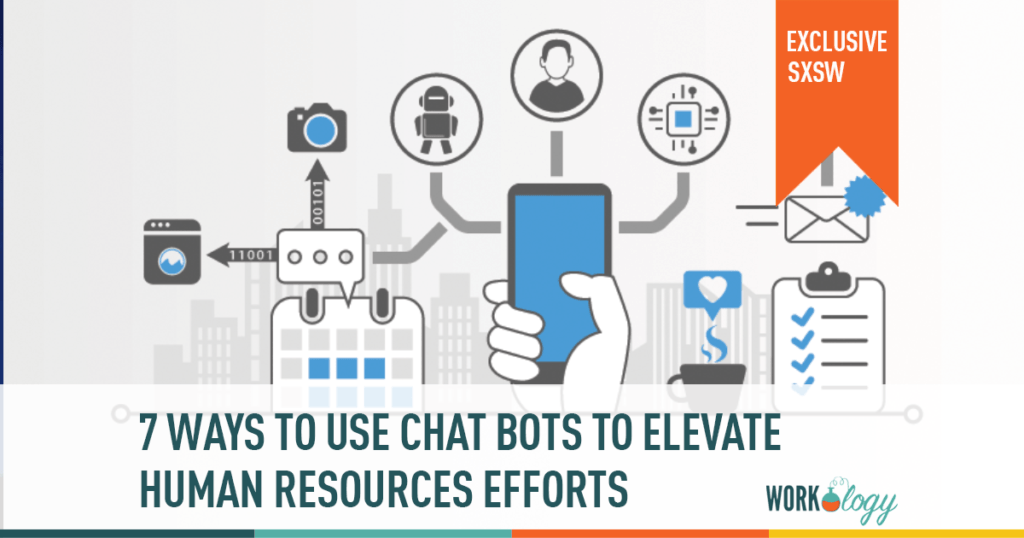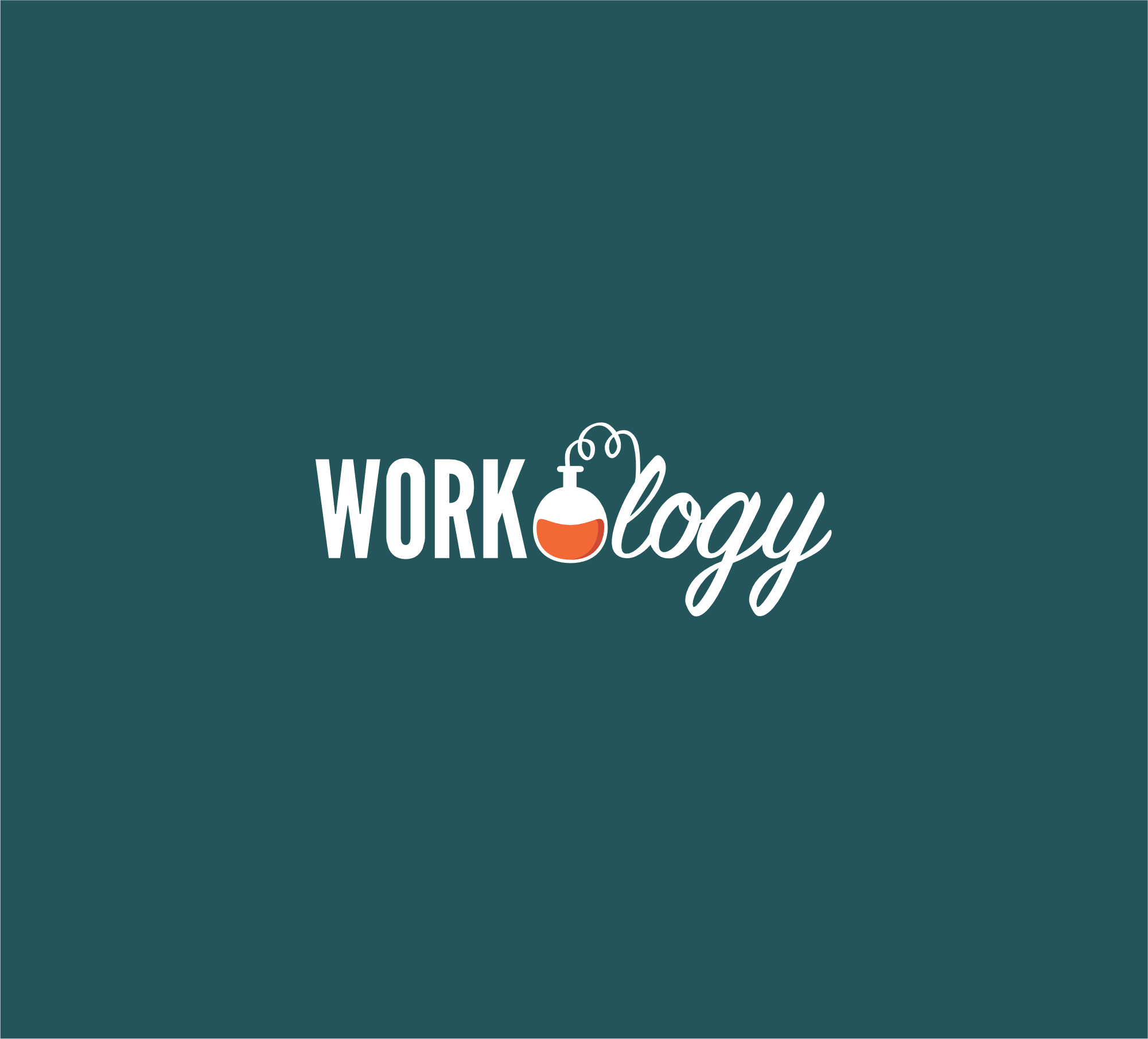Recruiters are overwhelmed by too many open positions. Candidates are frustrated with hiring processes that they view as too slow. So how can chatbots help your HR team? This week begins SXSW and one of the sessions and topics I’m most interested in is the subject of chat bots for HR and recruiting.
Chat Bots As Tools for HR and Recruitment
First, let’s define what a chatbot is. From SHRM: It’s a computer program that can simulate conversation—either via text or voice. Chatbots, powered by artificial intelligence (AI) and armed with machine learning, can interact with humans and become increasingly agile with each interaction. Chances are you’re familiar with robo-assistants like Amazon’s Alexa, Apple’s Siri and Microsoft’s Cortana. If you’ve ever interacted with one of these tools, you were interacting with a chatbot.
These tools can support recruiting professionals with the human interactions common to the hiring process—receiving a resume or application, setting up times for interviews, conducting interviews, making an offer, receiving an accepted offer and beginning the onboarding process. In short, chatbots can save time, expedite the hiring process and reach more candidates. Here are seven ways chatbots can help HR and recruiting, and free up your time to focus on high-touch tasks.
7 Ways to Use Chat Bots in Human Resources and Recruiting
(1) Appointment scheduling. Chatbots can allow candidates to schedule phone or in-person meetings (similar to how Calendly works). A lengthy interview scheduling process can damage your employer brand. It could also mean that you miss out on the best candidates because they get tired of waiting and accept a job with your competition instead.
Using a chatbot that’s calendar synced, candidates can book their interview through the chatbot. With Calendar sync it can access the calendars of the interview panel members. Which means that the interviews will be booked based on their real-time availability. This can prevent double-bookings or having to reschedule because not everyone was free at the agreed time.
(2) Customer service. Both to candidates and employees. Candidates have frequently asked questions. Employees spend hours each month searching for basic company-related information. Chatbots can quickly get the answers they are looking for, improving your candidate experience and making employees more productive and satisfied.
Chatbots are especially relevant for millennials, as this group relies heavily on mobile messaging platforms and new technology to stay connected. Chatbots are also extremely useful for the 3.7 million employees that work remotely and don’t have face-to-face access to HR. As a result, more talent will be retained due to better, faster, and easier forms of communication.
(3) Candidate screening. A chatbot can help in the screening process by not only getting prospective employees information but also performing quick background checks. Immediate answers hold onto potential applicants longer because they provide instant responses that keep potential applicants interested. As a result, there will be an increased number that actually complete applications.
Answers provided to potential applicants by chatbots are generally quite accurate and complete. This high rate of accuracy may reduce the need for follow-up questions. And without any additional questions, this would speed up an applicant decision-making about whether they want to apply. A high accuracy rate is possible because recruiting questions generally cover a very narrow range and most questions are easily predictable. As a result, you don’t need advanced AI technology to produce satisfactory answers about your jobs and the company.
(4) Onboarding. When a new employee is hired, the onboarding process tends to be repeatable and many questions from new staff members are predictable. The same applies to many parts of the training process for new employees.
A startup called Talla, based in Boston, develops chatbots designed to help new workers get up to speed and be more productive. The company is using advanced machine learning and natural language processing techniques in an effort to create software that is smarter than the average bot. Talla launched a prototype bot for managing to-do lists on the workplace communications platform Slack. So far, about 600 companies have added the chatbot to their Slack channel and are using it.
(5) Benefits enrollment. Some large HR software providers are already experimenting with chatbots as a new employee interface, allowing them to select benefits, 401(k) options, and enroll in various company programs (such as gym membership or lunch options).
Rather than trying to remember everything at once, a chatbot for HR will answer questions in real time, resulting in faster decision making for employees. A chatbot for HR teams creates an effective approach to answering crucial questions such as “When do we get paid?” or “How can I switch dental providers?”
(6) Employee communication. Companies like Overstock.com are using AI chatbots for its customer service employees. Overstock’s chatbot is called “Mila.” In addition to chatting in sick, employees can use Mila to schedule time off, check their schedules, and do a variety of other tasks that used to require making a phone call or sending an email. Now the company can fill schedules and replace workers faster, which ultimately saves money.
Microsoft has a chatbot for employees called ADbot that mines the corporate directory for information. The company is also working on building a bot on top of its intranet so employees can ask digital assistant simple questions, such as what’s for lunch at the cafe.
(7) Training and development. Using chatbots for training is effective because it offers more interactive participation by employees rather than sitting through a standard training video or watching a powerpoint presentation.
The evolution from using a chatbot as a productivity tool to using a chatbot to facilitate employee learning and development is natural because a good chatbot can communicate with learners in the same way friends and colleagues do. Learners won’t ignore a message from a dear friend, and they likely won’t ignore one from a chatbot if the chatbot is smart, friendly, and adds value to their day.
Where to Start with Chat Bots
Having a chatbot that provides hundreds of answers a day means that recruiters don’t have to write up answers or take as many phone calls from potential applicants. As a result, chatbots free up valuable recruiter time to do more important tasks.
Getting started using chatbots is a simple process if you already have data to train the bot like company knowledge bases, employee training documentation, internal service ticket records, and FAQs, to name a few. Take these essentials documents and pair them with one of the many chatbot solutions out there, and you can get started in no time.
It’s important to consider the challenges surrounding information security, legal boundaries, extensibility, and audit logging when making the decision to get started using bots for HR. There are privacy issues with benefits enrollment that must be considered, as well as candidate data protection. And then there’s the challenge of employee adoption. While millennials tend to be quite comfortable using chatbots, there may be some hesitation from employees who are used to face-to-face meetings with an HR representative. We recommend rolling out chatbot technology gradually and optionally.








One Comment
These days chatbots specifically built for HR for excellent conversational experiences. It can perform functions to onboard employees, for hiring purpose, employee reviews and many more. Chatbots are so promising because they’re built to learn and improve. Over time, conversational apps are primed to get smarter and build better user experiences. Come experience the world of chatbots on engati.com
Comments are closed.